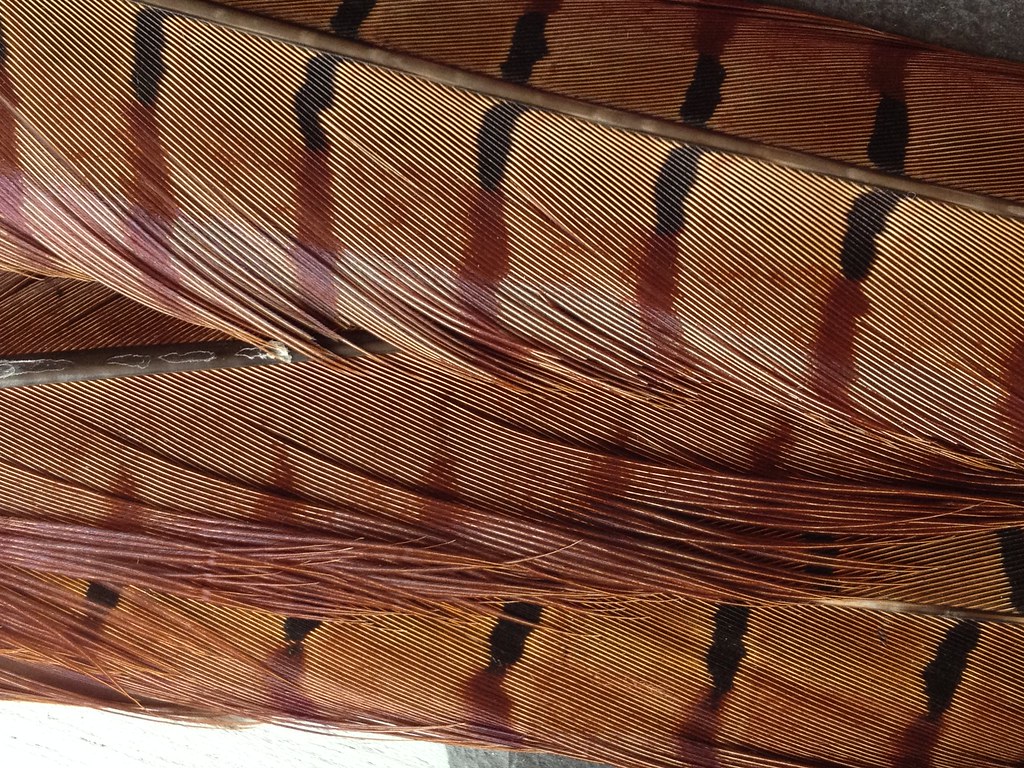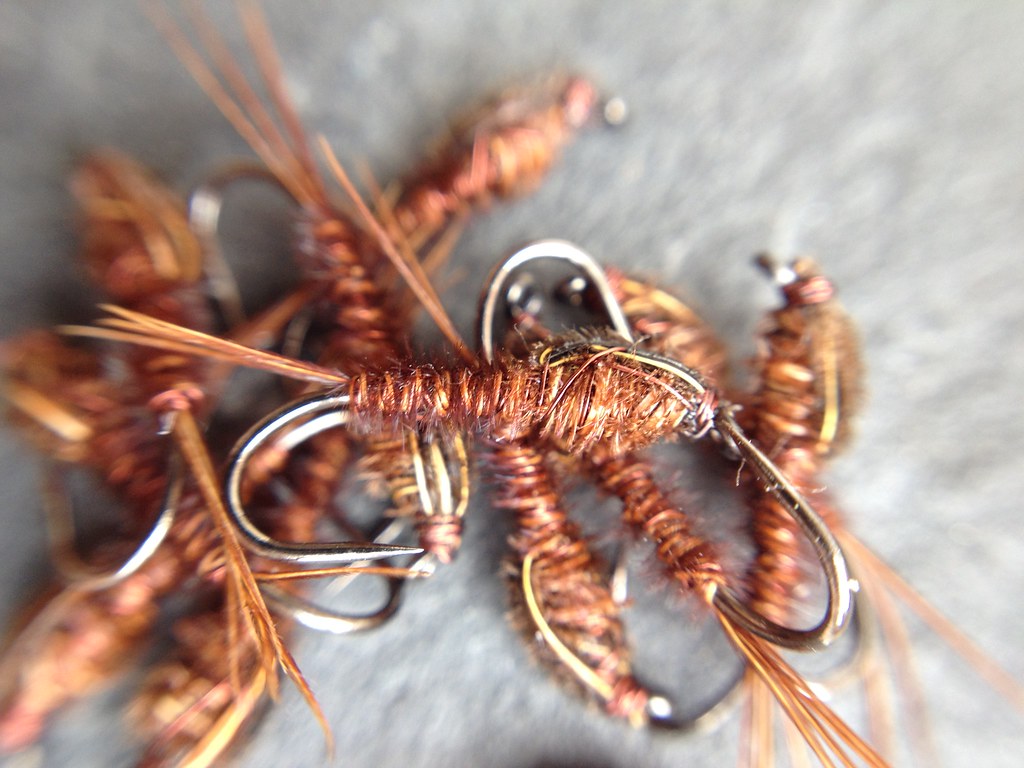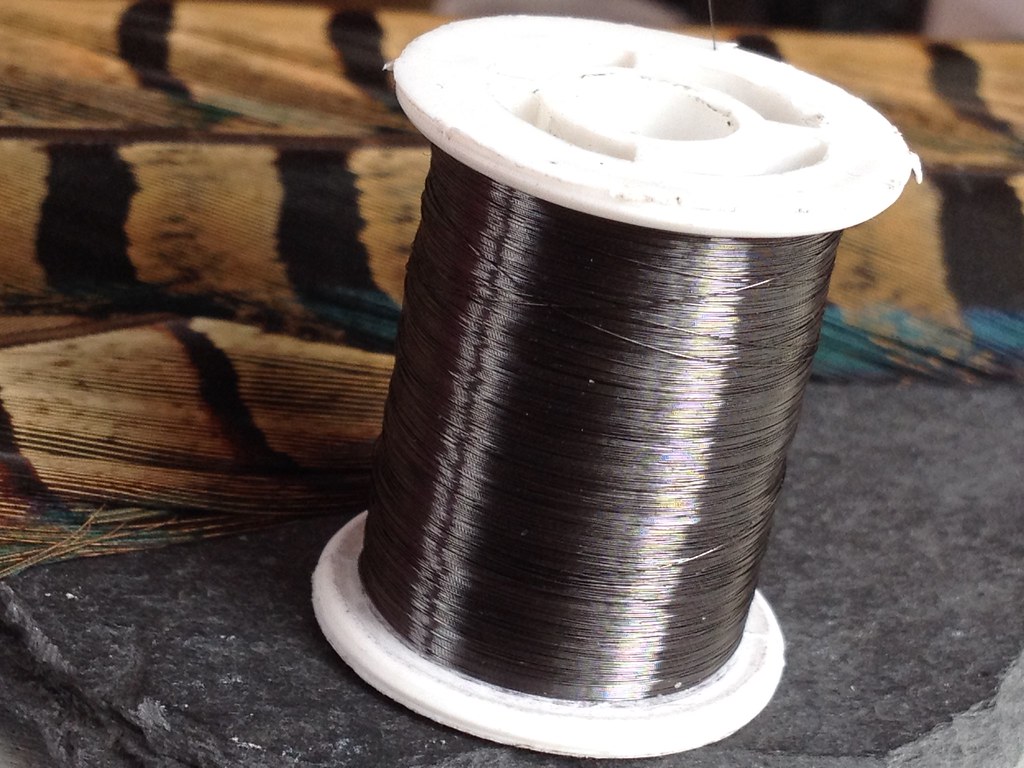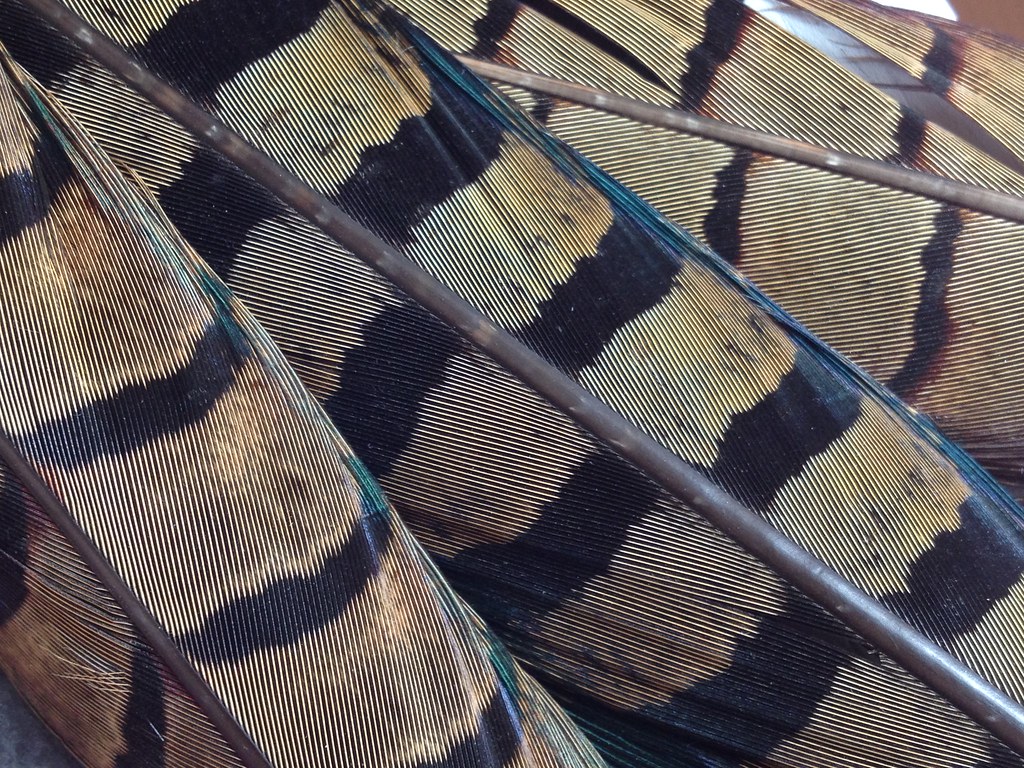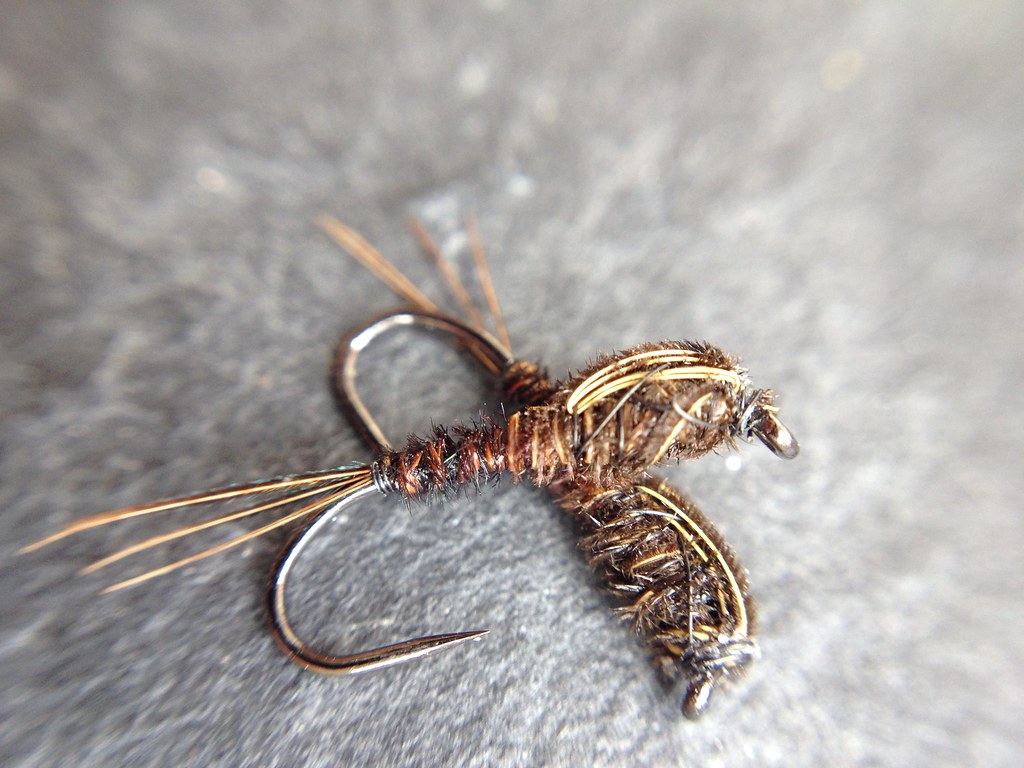Spoilt rotten this week, two afternoons fishing in a row. I went to the section of river I had intended on fishing yesterday; not before popping my head over a few bridges much further upstream, on sections of the river I shall have access to fish from tomorrow.
My first port of call was a bit of a diversion. I visited an area a little upstream of my eventual destination. This is where an outfall flows in to the river directly below a bridge. The outfall does have a constant discharge of water but it's insignificant and doesn't add much to the volume of water flowing down the river.
 |
| The "Bridge Pool" |
The reason I went here first, is because the pool below the outfall normal holds a few trout. These, are of a size, that would be considered higher than average. Last year, I caught a couple of good fish over two pounds - one of which was pushing three - on dry-flies. Compared to the rest of the urban stretch these fish do rise frequently, they cruise around the pool rising mostly to midges I suspect.
Looking down from the bridge, I could see two trout. One was sat on station at the very edge of the pool in a small funnel of current; the other, was cruising around the pool and crucially it was rising; infrequently but nethertheless still rising.
I sat on a small island and tackled up. From my position I could see the cruising trout clearly. I tied on a size 22 black Klinkhåmer; the fish I have previously caught here have fell to small black flies. It took a couple of casts before the fish sucked down my fly. Cautious of the fine tippet (0.11mm) and small fly I gently lifted into the fish. However the fish stayed on only for a second or two; I'd clearly not lifted hard enough. I'd blown it!
I knew from experience not to waste further time here, the other trout would have quite likely been spooked too, so I moved downstream. I didn't fish here at all last year, only coming as far down as the outfall pool. In the past, I have caught a reasonable number of fish all the way down, to what I consider the bottom end of the urban section. I have even had a 6lb 2oz chub on bread flake, the river is not much more than fifteen yards across through most of this part.
 |
| The small weir pool |
I started on a sharp bend. This pool had a tree over hanging but this had since been removed leaving the pool exposed. Easing in downstream, I positioned myself over on the far bank and re-tied my leader. Upstream of the pool is a small weir; the drop is less than six but a weir it is. I anticipated a few fish from this pool, but not off the surface. I tied up a duo rig using a size 16 adams klink and a size 12 JP pupa, this was the only thing I had, that I thought would be heavy enough to get down in the faster flow.
 |
| Second fish of the day |
It didn't take long before the klink pulled under. Being far down the pool it was a smallish fish that started my day, it was quickly returned. Continuing up I connected with a much bigger fish. It fought well in the strong flow, thankfully it didn't make much of a commotion, leaving me the final part of the pool to fish. As expected the best fish came from the top. This trout leapt all over the place and tore off on a couple of good runs, pulling line of the reel. These fish, in comparison to yesterday, appeared in much better condition than those I caught yesterday.
 |
| This fish had an interesting mark on it's nose, it looks like it has been worn away |
 |
| The run that the 15" fish came from, the current runs down the right hand side |
 |
Regurgitated bullhead
|
Above the weir the river is smoother and even paced. I fished my way up this glide without any success until I reached a faster, poppling run. I caught two trout from this small section; a smaller fish to start with and then a much bigger fish. The bigger fish was a good 15", as I netted it, it regurgitated a half digested fish which by the shape of it was a bullhead. The fish was in fantastic condition with a shovel for a tail, it had given me the hardest fight of the day so far.
 |
| Look at the tail |
 |
| What a corker |
I took a break after releasing the last trout. As I watched the river, a fish rose across on the far side in the main push of current. I gave it several attempts but couldn't tempt this fish.
Upstream, was a short length of shallow riffle which I quickly made my way through, before settling at the bottom of another run. Ahead of me lying hard on the bottom of slacker water in the edge, I could see a small shoal of dace. Being mindful not to spook these fish, I cast across the river into the main run of water. I managed only one fish here; I connected with a couple and missed two rises. That was the end of the section, upstream is wide and shallow, holding very few fish.
Almost at the end of my afternoon I decided to head back to where I started, at the outfall pool. Looking again from the bridge both trout were still there. I opted for a different approach and decided to target the fish holding station. I climbed down into the river upstream, slowly creeping through the water under the bridge; I settled the other side of the pool from the trout, immediately in front of the outflow.
 |
| Looking at the outflow, I caught the trout on the far right against the wall |
It took a couple of casts, to get the fly in the right position. Second drift down I had an almighty slashing rise, of course I fluffed it. Unsure whether I had wrecked my chances, I waited a minute or so before trying again. The flow here is minimal, enough to just keep things moving but plenty slow enough to allow the fly a long drift. A couple more well placed casts saw the fish rise again, a gently and firm lift to the side saw the fish well connected. The trout powered off, pulling hard in the pool it soon left the pool charging across the river in to the main flow. This fish fought really hard and took a good few minutes to get it in.
 |
| Heading to the net |
 |
| Little porker |
As I was netting the fish I noticed I had an audience; a couple of young boys were sitting on top of the bridge as asked me about the fish commenting on how big it was and that they'd never seen a fish that big in the river. Being modest I told them there were bigger to be had. A kind chap offered to take my picture which I couldn't turn down. That fish marked the end of the afternoon; it was very plump, much deeper in the body than its length would suggest, I suppose it was just under two pounds. Walking back to the car I was extremely pleased. Two back-to-back afternoons on the river on opening week; I couldn't ask for better.
